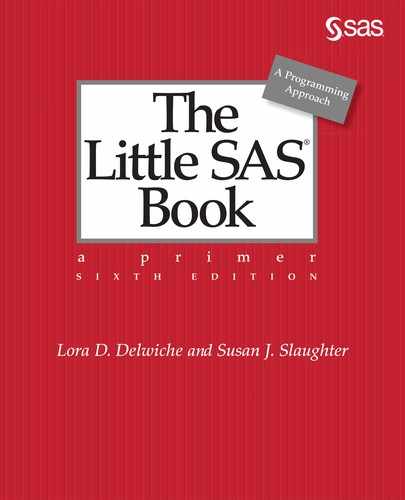Introducing SAS Software
SAS software is used by millions of people all over the world—in over 147 countries, at over 83,000 sites. SAS (pronounced sass) is both a company and software. When people say SAS, they sometimes mean the software running on their computers and sometimes mean the company, SAS Institute.
People often ask what SAS stands for. Originally the letters S-A-S stood for Statistical Analysis System (not to be confused with Scandinavian Airlines System, San Antonio Shoemakers, or the Society for Applied Spectroscopy). But SAS products quickly became so diverse that SAS officially dropped the name Statistical Analysis System and became simply SAS.
SAS products The roots of SAS software reach back to the 1970s when it started out as a software package for statistical analysis, but SAS didn’t stop there. By the mid-1980s SAS had already branched out into graphics, online data entry, and compilers for the C programming language. In the 1990s, the SAS family tree grew to include tools for visualizing data, administering data warehouses, and building interfaces to the World Wide Web. In the new century, SAS has continued to grow with products designed for cleansing messy data, discovering and developing drugs, detecting money laundering, and building systems for artificial intelligence and machine learning.
While SAS has a diverse family of products, most of these products are integrated. That is, they can be put together like building blocks to construct a seamless system. For example, you might use SAS/ACCESS software to read data stored in an external database such as Oracle, analyze it using SAS/ETS software (econometrics and time series software for modeling and forecasting), use ODS Graphics to produce sophisticated plots, and then forward the results in an email message to your colleagues, all in a single computer program. To find out more about the products that are available from SAS, visit the website:
Learning SAS In addition to this and other books, there are online resources for learning SAS. SAS Institute has many how-to tutorials and complete courses covering a broad range of topics. Some of these are free, while others are available for a fee. If you don’t have access to SAS software at your workplace or school, then there are other ways you can practice what you learn. SAS University Edition is available for free download and installation on your personal computer. Or, you can set up an account to use SAS OnDemand for Academics which runs on servers hosted by SAS Institute. Both SAS University Edition and SAS OnDemand for Academics are available for academic, noncommercial use only.
Operating environments SAS software runs in a wide range of operating environments. You can take a program written on a personal computer and run it on a UNIX server after changing only the file-handling statements that are specific to each operating environment. And because SAS programs are as portable as possible, SAS programmers are as portable as possible, too. If you know SAS in one operating environment, you can switch to another operating environment without having to relearn SAS.
SASware Ballot SAS puts a high percentage of its revenue into research and development, and each year SAS users help determine how that money will be spent by contributing ideas for the SASware Ballot. The ballot is a list of suggestions for new features and enhancements. Anyone can submit an idea and thereby influence the future development of SAS software. To contribute your own ideas or to vote for ones that you like, search the internet for “SASware Ballot.”
